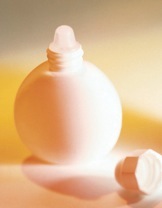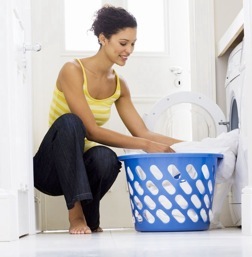-
Ear, Nose & Throat Problems






Hay Fever
Hay fever has nothing to do with hay or fever. The medical term for hay fever is allergic rhinitis. It is most common in spring and fall when a lot of ragweed is in the air. Some people have hay fever all year, though.
Signs & Symptoms
-
•Itchy or watery eyes.
-
•Runny, itchy nose.
-
•Congestion.
-
•Sneezing.
Causes
Hay fever is a reaction of the upper respiratory tract to allergens.
Treatment
Talk to your doctor if self-care measures do not help. He or she may prescribe:
-
•Antihistamines. For best results, take the antihistamine 30 minutes before going outside. {Note: Some over-the-counter antihistamines can make you more drowsy than prescribed ones. Be careful when driving and operating machinery since some antihistamines can make you drowsy.}
-
•A decongestant.
{Note: Do not give antihistamines, decongestants, and other over-the-counter medicines for colds, coughs, and/or the flu to children less than 2 years old. For children 2 years old and older, follow their doctor’s advice.
-
•A corticosteroid nasal spray and eye drops, cromolyn sodium, and oral corticosteroids.
-
•Skin tests to find out what things you are allergic to.
-
•Allergy shots.
It is best to take what your doctor advises instead of testing over-the-counter products on your own.
Allergens can cause itchy or watery eyes.






Your doctor may advise a nasal spray for hay fever symptoms.

Do you have severe breathing problems or severe wheezing?
Do you have any of these symptoms of an infection?
-
•Fever.
-
•Green, yellow, or bloody-colored nasal discharge or mucus.
-
•Throbbing facial pain.
Do you still have hay fever symptoms when you avoid hay fever triggers? Or, do hay fever symptoms keep you from doing daily activities?
Self-Care / Prevention
Avoid Hay Fever Triggers
-
•If you are allergic to pollen and molds, let someone else do outside chores. Mowing the lawn or raking leaves can make you very sick.
-
•Keep windows and doors shut and stay inside when the pollen count or humidity is high. Early morning is sometimes the worst.
-
•Avoid tobacco smoke and other air pollutants.
-
•To limit dust, mold, and pollen:
Questions to Ask
Every week, wash the sheets and blankets on your bed. Wash them in hot water.

-
-Put a plastic cover on your mattress or cover it completely with an allergen-free mattress cover.
-
-Sleep with no pillow or with the kind your doctor or health care provider recommends. If you use a pillow, cover it with an allergen-free cover.
-
-Don’t dry sheets and blankets outside.
-
-Try not to have stuffed animals kept in the bedroom. If you must, have only one that can be washed. Wash it in hot water once a week.
-
-Use curtains and rugs that can be washed often. Don’t use carpeting.
-
-Dust and vacuum often. Wear a dust filter mask when you do.
-
-Put an electronic air filter on your furnace or use portable air purifiers.
-
-Shower or bathe and wash your hair after heavy exposure to pollen, dust, etc.
-
•Don’t have pets. If you have a pet, keep it out of the bedroom. When you can, keep the pet outdoors.
-
•Use an air conditioner or air cleaner in your house, especially in the bedroom. Electronic air filters are better than mechanical ones. Clean the filter often. Or, try a doctor-approved air purifier, especially in the bedroom. Devices with HEPA filters can be very effective in cleaning indoor air.




Get more information from:
HealthyLearn® | www.HealthyLearn.com. Click on MedlinePlus®.
Asthma and Allergy Foundation of America | 800.7.ASTHMA (727.8462) | www.aafa.org



Copyright © 2009, American Institute for Preventive Medicine. All rights reserved.